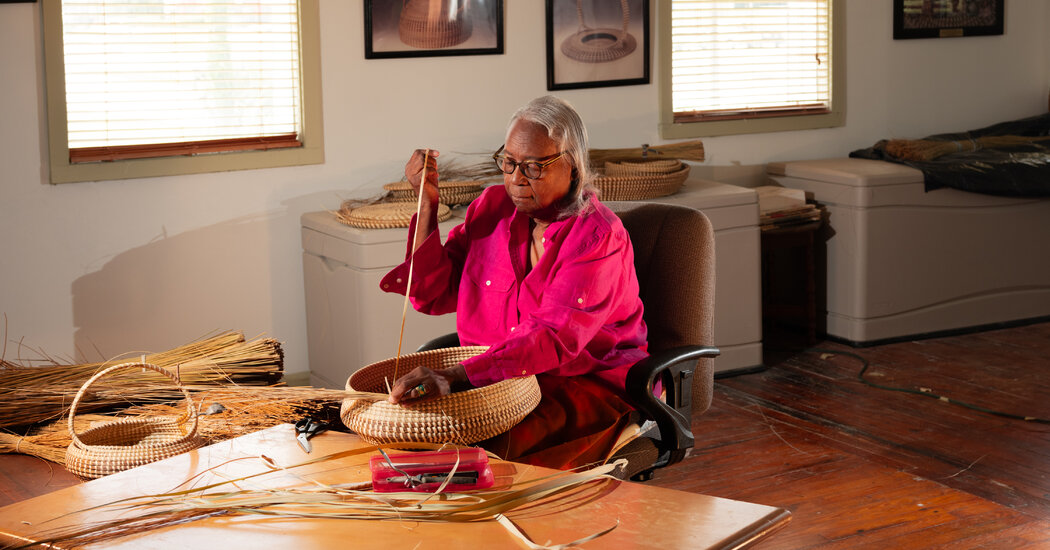
Mary Jackson was 4 when she learned how to weave. Sitting at her mother’s knee in the late 1940s, she tied her first knots with nimble little fingers, binding coils of sea grasses. In the Gullah Geechee communities of coastal South Carolina, where basket making is a centuries-old tradition, young children often start the weave for their elders. Jackson grew up surrounded by expert needlewomen who elevated this style of weaving from a strictly domestic craft to culturally profound artistry.
Those needlewomen specialized in the fiber artistry of the Gullah Geechee — Black Southerners who can trace their distinctive sea island dialect and customs back to homelands in West and Central Africa. By the mid-1970s, Jackson had mastered the types of baskets known to her family — but had also begun to change the weave in spectacular ways.
“A basket will evolve from one that I’ve made before,” she said. “Each one becomes an individual.”
While her work remains rooted in the traditions of her ancestors, Jackson, 79, has developed her own style that reflects a singular vision and the instinctive way she handles her raw materials.
Today many baskets continue to be produced by Gullah Geechee descendants like Jackson who still live near where their families were once forced to labor on plantations along the Ashley and Santee Rivers, and are sold at makeshift roadside stands on the Savannah Highway corridor. But few weavers have pushed the bounds of artistry like Jackson, a MacArthur Foundation “genius” fellowship recipient whose work is now in permanent collections at the Smithsonian American Art Museum and the Museum of Arts and Design in New York, among others.
“We don’t look at Mary’s work as craft; we look at her work as representing the visual arts of our region,” said Angela Mack, the president of the Gibbes Museum of Art in Charleston, S.C., where Jackson had her first solo exhibition, in 1984. “In the South, those lines are blurred. There are so many artists who are excellent at what they do but are identified a certain way because of the evolution of their art form, and how they learned it.”






